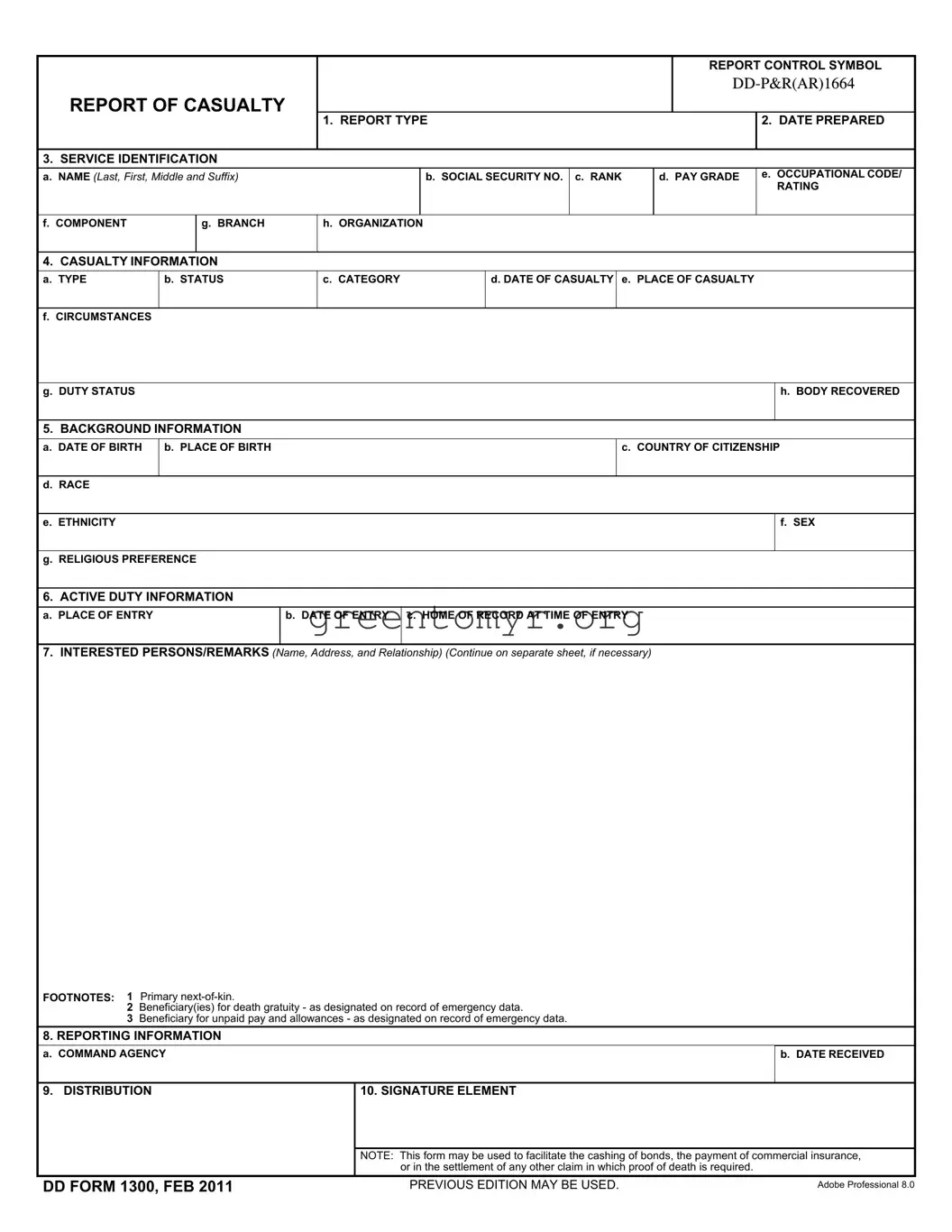The DD Form 1300 is a crucial document used by the U.S. military to report casualties and assist in managing related administrative tasks. This form is essential for recording various details about the service member, including their name, social security number, rank, and organization, which help in identifying the affected individual. It also collects important casualty information such as the type and status of the casualty, the date and location of the incident, and circumstances surrounding it. Additionally, the form requires background data about the service member, including their date and place of birth, citizenship, race, ethnicity, sex, and religious preference. Active duty information, including entry details and home of record at the time of entry, are also captured on this form. Moreover, it includes a section for interested persons and remarks, which provides space to document the names, addresses, and relationships of primary contacts. The DD Form 1300 plays a vital role not only in reporting casualties but also in facilitating essential processes related to benefits, insurance claims, and other necessary administrative actions following the death of a service member. Understanding the form’s structure and purpose can greatly assist individuals navigating the often-complicated aftermath of a casualty incident.
